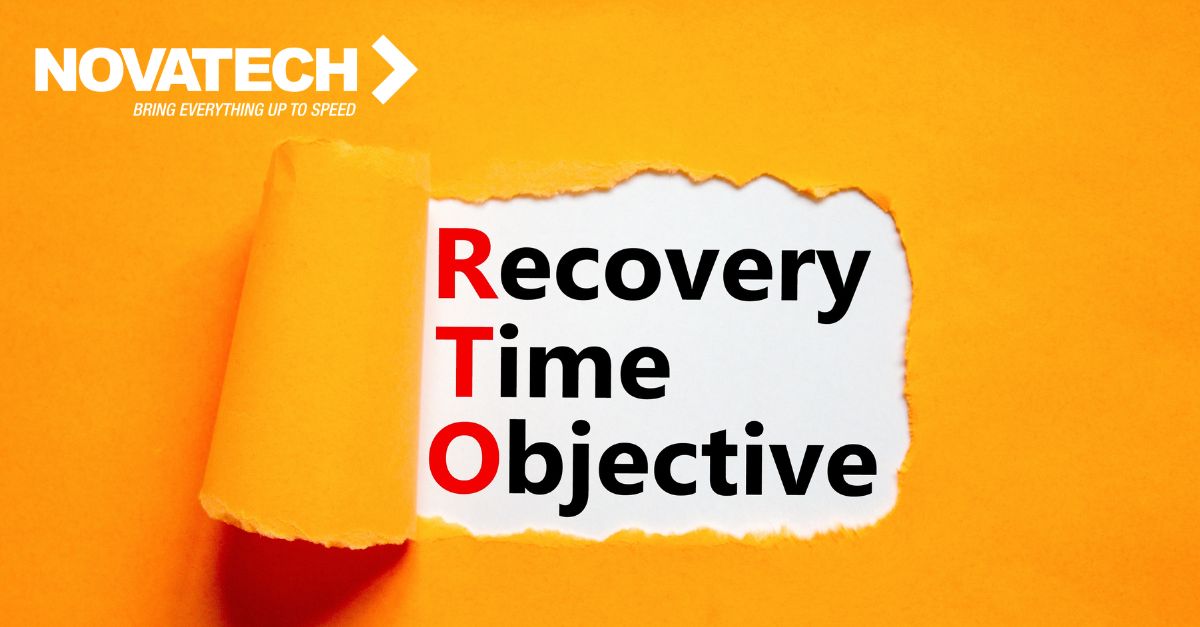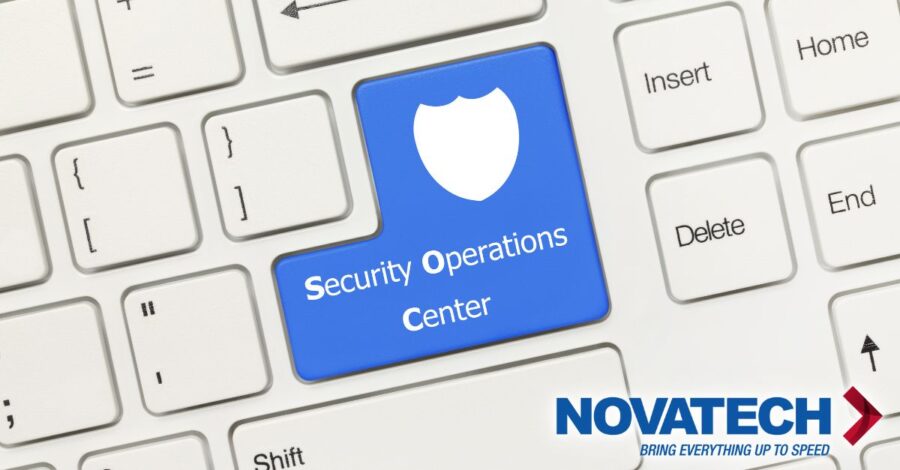Understanding RTO: Ensuring Business Continuity
3 min read

Businesses face a myriad of challenges and risks related to their IT infrastructure and data management. One crucial aspect of managing these risks is understanding and implementing Recovery Time Objective (RTO). In this article, we are going to cover RTO meaning, and how this often neglected part of Managed IT Services can be overlooked.
At Novatech, we prioritize not only the protection of your digital assets but also the swift recovery of your systems in the event of a disruption. This blog post considers the meaning of RTO and its significance in our comprehensive range of Managed IT Services and helping your company avoid data loss.
What is Recovery Time Objective (RTO)?
RTO refers to the targeted duration of time and a service level within which a business process must be restored after a disaster or disruption to avoid unacceptable consequences associated with a break in business continuity. RTO is part of the core of disaster recovery planning and data protection.
Why is RTO Important for Your Business?
Minimizing Downtime: Downtime connects to revenue, and prolonged downtime can lead to significant financial losses. RTO helps in quantifying the maximum tolerable downtime, enabling businesses to strategize accordingly.
Enhanced Planning: Understanding RTO assists in developing robust disaster recovery and business continuity plans. It’s a critical component in our approach to Managed IT Services and Cybersecurity.
Client Trust and Compliance: Adhering to defined RTOs ensures compliance with industry standards and builds client trust, showcasing your commitment to reliable and uninterrupted services.
How Novatech Manages RTO for Your Business
At Novatech, we integrate RTO into our Managed IT Services by:
- Conducting thorough risk assessments to determine appropriate RTOs for different business processes.
- Implementing advanced Cloud IT Support and Cybersecurity measures to mitigate risks and ensure faster recovery.
- Providing Unified Communications solutions that maintain connectivity even in the face of disruptions.
Frequently Asked Questions (FAQs)
How is RTO different from Recovery Point Objective (RPO)?
While RTO focuses on the time taken to recover after a disruption, RPO (Recovery Point Objective) refers to the maximum age of files that must be recovered from backup storage for normal operations to resume.
Can RTO vary within the same organization?
Yes, RTO can vary significantly across different departments or functions within an organization, depending on the criticality and nature of their operations.
How does Novatech assist in determining an appropriate RTO?
Novatech’s team of experts conducts a detailed analysis of your business processes, evaluates the potential impact of disruptions, and collaborates with you to determine an RTO that aligns with your business objectives and risk tolerance.
Does cloud computing affect RTO?
Cloud computing can positively impact RTO by providing more resilient and scalable infrastructure, which aids in faster recovery and reduces potential downtime. This can keep your system and each employee working at maximum efficiency.
Choosing Novatech to help you have Acceptable RTO Speed.
Understanding and implementing an appropriate Recovery Time Objective is vital for any disaster recovery plan.
Novatech’s commitment to managing your office under one technology umbrella ensures that your RTO needs are not just met but seamlessly integrated into a comprehensive IT strategy. This approach not only safeguards your operations but also fortifies your business against the unpredictable nature of digital threats and disruptions.
Contact Novatech today to ensure your systems are working and connected so your team can work as efficiently as possible and ensure your data is protected.


